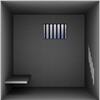
Three-strikes Law Fails to Reduce Crime in California
California’s three-strikes law has not reduced violent crime, but has contributed significantly to the state’s financial woes by substantially increasing the prison population, according to a University of California, Riverside researcher.
Declining crime rates in California and nationwide reflect declines in alcohol consumption, not tough-on-crime policies such as three-strikes laws, says Robert Nash Parker, a sociologist and director of the Presley Center for Crime and Justice Studies at UCR.
Parker, who is known internationally for groundbreaking research on the relationship between alcohol policies and crime, details those findings in “Worse Policy After Bad: How and Why California’s ‘Three Strikes’ is a Complete Failure as Crime and Economic Policy, and What to Do About Either,” which will appear in the spring issue of California Journal of Politics and Policy.
Three-strikes legislation, which took effect in 1994, was intended to incarcerate so-called “career criminals” for 25 years to life upon a third conviction, even when the third offense was a nonviolent crime. California’s crime rate has been cut in half in the last 20 years — a decline that began two years before the implementation of three-strikes legislation.
“Political leaders, activists, law enforcement personnel, and elected officials in California believe the state’s three-strikes law is the cause of this magnificent decline in violence,” Parker said. “That is not the case. Three-strikes has had nothing whatsoever to do with the drop in violent crime.”
Analyzing national crime data, Parker found that crime in California has declined at rates similar to states with three-strikes policies and those without — including large states with no three-strikes laws such as Texas, New York and Illinois — and found little difference. “This suggests that whatever is driving the trend in violent crime over the last 46 years in these states it is not three-strikes policy,” Parker concluded.
A National Institute of Justice review of three-strikes legislation found that California imprisoned roughly 300 times the number of inmates as did the state of Washington, which enacted a three-strikes law about the same time as California. California’s population is about 5.5 times as large as that of Washington.
“Differences between California’s three-strikes law and those of Washington and other states explains this difference,” Parker said. “California increased its prison population significantly yet obtained roughly the same crime drop at the same time as states that had similar laws, but without their impact, as well as that obtained by states that did not pass any laws aimed at reducing violence through vast increase in the prison population.”
In earlier research, Parker found that homicide rates nationally correlate with alcohol consumption and unemployment rates. Since the 1930s, an increase in alcohol consumption has occurred one to two years before an upturn in homicide rates, and has decreased one to two years before a downturn in homicide rates. Nationwide, alcohol consumption peaked in 1982 and has declined significantly and steadily since.
“There is no justification for continuing three-strikes from a violence-prevention point of view,” Parker says. “My analysis suggests that alcohol policy designed to reduce overall consumption in California may be more effective at reducing violence than three-strikes or other criminal justice policy initiatives.”
The economic impact on California has been devastating, Parker added. Although the state’s financial troubles are complex, three-strikes has amplified those problems by consuming an ever-larger portion of the general fund budget each year.
For example, in 1985 spending on higher education consumed about 11 percent of the general fund, while prison funding accounted for about 4 percent. By 2010, spending on higher education accounted for less than 6 percent of total spending while prison costs consumed about 10 percent.
The state auditor estimates that future prison costs attributable to three-strikes sentencing range from $19 billion to $23 billion annually, perhaps more, depending on how the state responds to the 2011 U.S. Supreme Court order to release 40,000 inmates from overcrowded prisons. In response to that order, the Legislature plans to divert most of those inmates to county jails, with the state bearing some of the costs.
If inmates sentenced under three-strikes were released immediately, the state and counties would save about $1.3 billion immediately, and likely more in coming years, according to the auditor’s report.
“If three strikes has resulted in all this incarceration and expense, yet has little to do with controlling crime, why not release these inmates?” Parker asked. “The state of California should give up its addiction to the all-you-can eat buffet of imprisonment, the result of which has been to undermine the financial health of the state, weaken the quality of education at all levels, and force California to make draconian cuts in programs that enhance and benefit the lives of its residents in exchange for a mistaken idea that public safety was the result. The bottom-line result of three-strikes has been an almost unbearable financial burden that looms in the future despite current efforts, and which will only be resolved when the pipeline of over-punishment is finally shut down.”